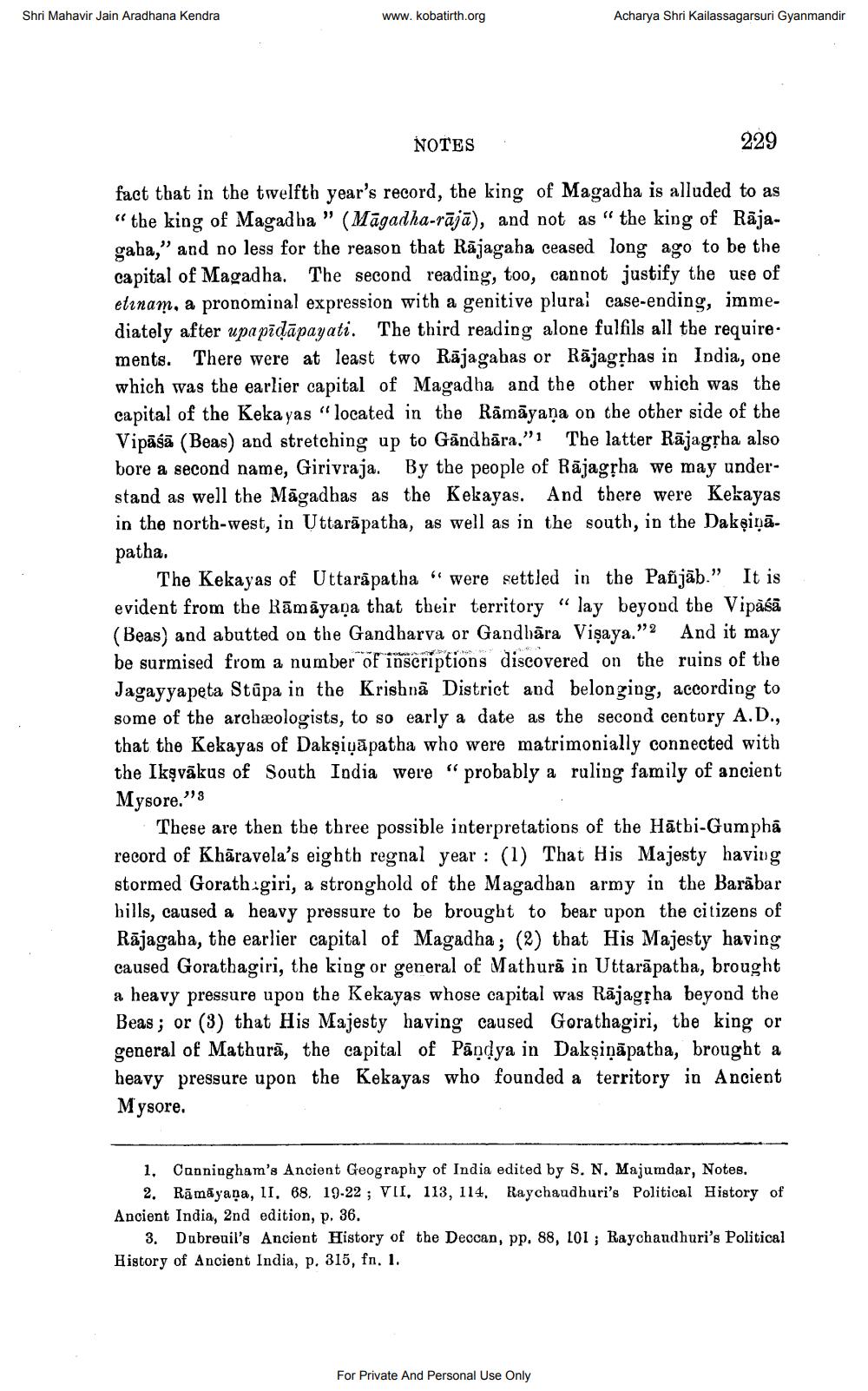________________
Shri Mahavir Jain Aradhana Kendra
www.kobatirth.org
NOTES
Acharya Shri Kailassagarsuri Gyanmandir
229
fact that in the twelfth year's record, the king of Magadha is alluded to as "the king of Magadha " (Magadha-rājā), and not as "the king of Rajagaha," and no less for the reason that Rajagaha ceased long ago to be the capital of Magadha. The second reading, too, cannot justify the use of etinam, a pronominal expression with a genitive plural case-ending, immediately after upapīḍāpayati. The third reading alone fulfils all the requirements. There were at least two Rajagahas or Rajagṛhas in India, one which was the earlier capital of Magadha and the other which was the capital of the Kekayas "located in the Ramayana on the other side of the Vipasa (Beas) and stretching up to Gandhara."1 The latter Rajagṛha also bore a second name, Girivraja. By the people of Rajagṛha we may understand as well the Magadhas as the Kekayas. And there were Kekayas in the north-west, in Uttarapatha, as well as in the south, in the Dakṣiņāpatha.
"C
The Kekayas of Uttarapatha were settled in the Pañjab." It is evident from the Rāmāyaṇa that their territory "lay beyond the Vipasā (Beas) and abutted on the Gandharva or Gandhara Visaya."2 And it may be surmised from a number of inscriptions discovered on the ruins of the Jagayyapeta Stupa in the Krishna District and belonging, according to some of the archæologists, to so early a date as the second century A.D., that the Kekayas of Dakṣiuapatha who were matrimonially connected with the Ikṣvākus of South India were "probably a ruling family of ancient Mysore."3
These are then the three possible interpretations of the Hathi-Gumphā record of Kharavela's eighth regnal year: (1) That His Majesty having stormed Gorathigiri, a stronghold of the Magadhan army in the Barabar hills, caused a heavy pressure to be brought to bear upon the citizens of Rajagaha, the earlier capital of Magadha; (2) that His Majesty having caused Gorathagiri, the king or general of Mathura in Uttarapatha, brought a heavy pressure upon the Kekayas whose capital was Rajagṛha beyond the Beas; or (3) that His Majesty having caused Gora thagiri, the king or general of Mathura, the capital of Pandya in Dakṣinapatha, brought a heavy pressure upon the Kekayas who founded a territory in Ancient Mysore.
For Private And Personal Use Only
1. Canningham's Ancient Geography of India edited by S. N. Majumdar, Notes. 2. Rāmāyaṇa, II. 68. 19-22; VII, 113, 114, Raychaudhuri's Political History of Ancient India, 2nd edition, p. 36.
3. Dubreuil's Ancient History of the Deccan, pp. 88, 101; Raychaudhuri's Political History of Ancient India, p. 315, fn. 1.




